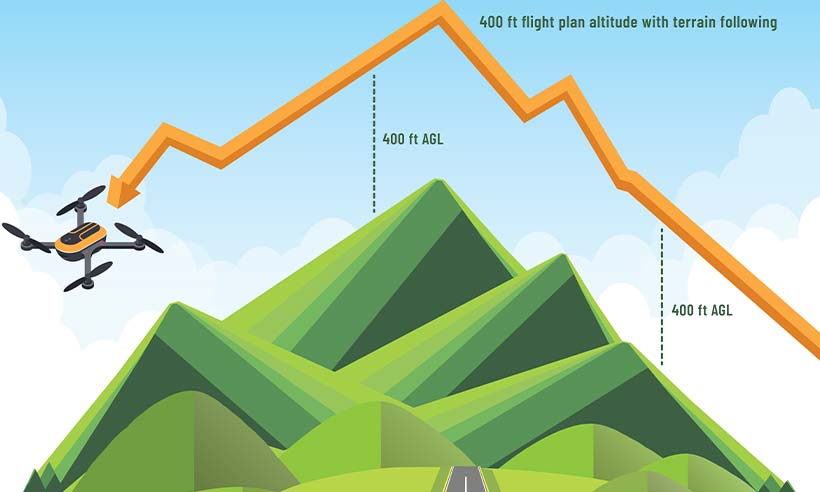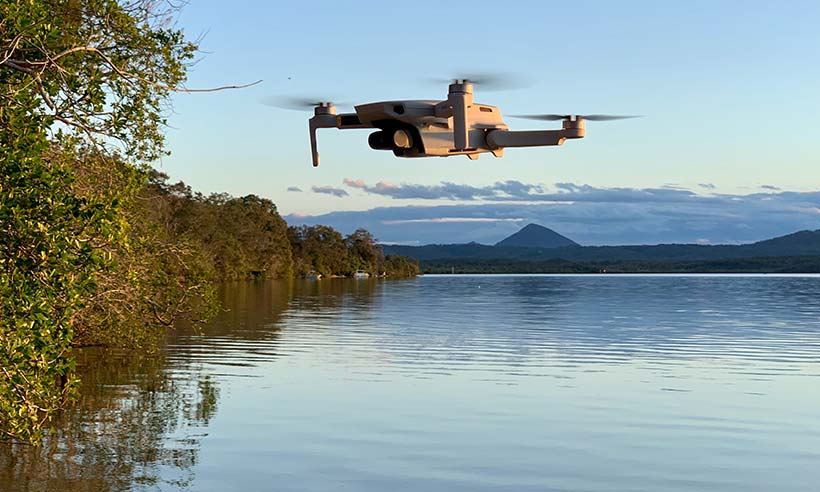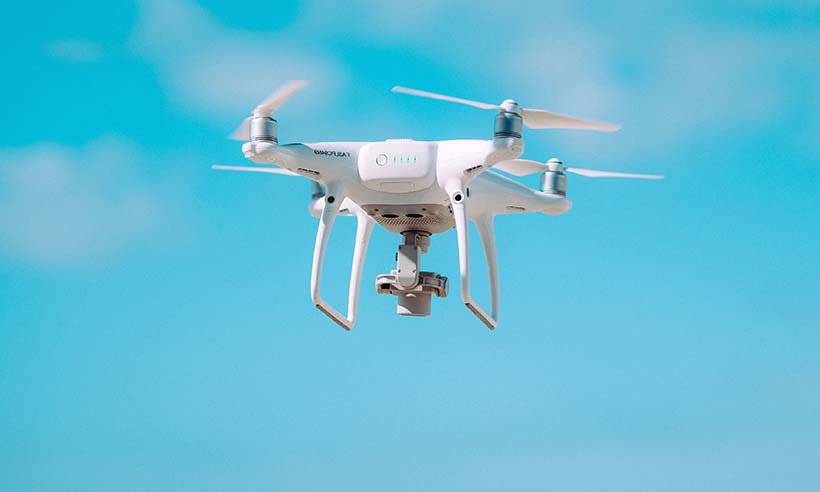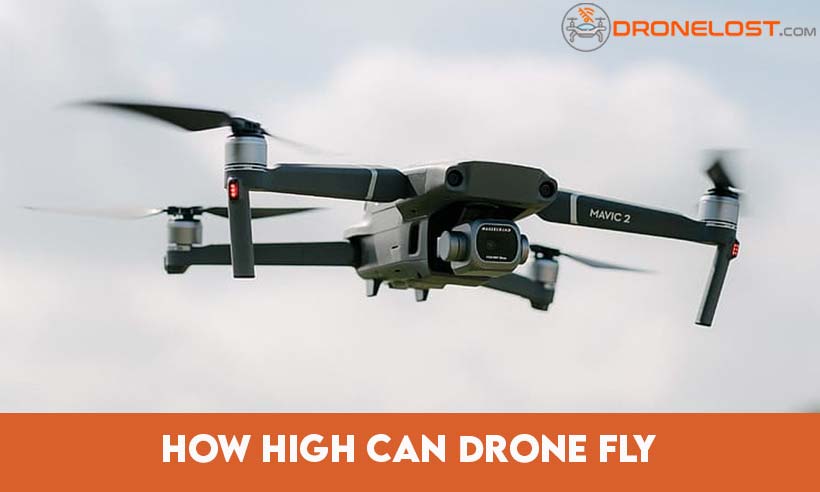Dronelost.com – Drones have become increasingly popular in recent years, not just among hobbyists but also for commercial and industrial use. With their ability to fly high, capture stunning aerial footage, and perform complex tasks, drones have revolutionized how we view the world and carry out operations. But how high can a drone fly?
The answer to this question depends on several factors, including the type of drone, its power source, and the regulations in the area where it is being flown. While some drones can reach altitudes of several thousand feet, others are limited to a few hundred feet.
Drones come in various shapes and sizes, each with its flight capabilities. A drone’s maximum altitude depends on several key factors, including its design, technology, and legal restrictions. When considering how high a drone can fly, it’s important to note that regulatory limits often dictate the maximum altitude.
However, it’s also worth troubleshooting other potential issues, such as ensuring proper connectivity between the drone and its controller. If you’re experiencing difficulties like ‘My drone won’t connect to the controller,’ try checking the battery levels, verifying the signal strength, and following the manufacturer’s instructions for re-establishing the connection.
We will closely examine the factors that influence a drone’s maximum altitude, whether you’re a drone enthusiast, a professional drone pilot, or simply curious about the limits of drone technology. This guide will provide valuable insights into the world of drone flight.
The Limits of Altitude: How High Can Drones Fly?

Drones are becoming increasingly popular, with everyone from hobbyists to businesses using them for various purposes. One of the most common questions about drones is how high they can fly.
1. Maximum Altitude for Recreational Drones
Recreational drones, or hobby drones, are the most common type of drone in use. The Federal Aviation Administration (FAA) has set guidelines for hobby drones, including a maximum altitude of 400 feet above ground level (AGL). This altitude limit ensures that drones do not interfere with manned aircraft, which typically fly more than 400 feet AGL.
It is important to note that this altitude limit is just a guideline, not a hard and fast rule. Hobbyists can apply for a waiver from the FAA to fly their drones higher than 400 feet AGL, but they must have a valid reason to do so. Examples of valid reasons might include conducting scientific research or filming a movie.
That being said, it is generally not a good idea for hobbyists to fly their drones higher than 400 feet AGL without a valid reason. Doing so could pose a safety risk to manned aircraft and violate FAA guidelines.
2. Maximum Altitude for Commercial Drones
Commercial drones are used for various purposes, including aerial photography, surveying, and delivery services. The FAA also sets the maximum altitude for commercial drones, and it varies depending on the type of drone and the purpose for which it is being flown.
For example, commercial drones that weigh less than 55 pounds and are being flown for non-recreational purposes must not exceed an altitude of 400 feet AGL, unless the FAA has granted an exemption.
Commercial drones weighing more than 55 pounds must always remain below 400 feet AGL. There are some exceptions to these rules, however. Drones flying in certain designated airspace, such as near airports, may be subject to more stringent altitude restrictions. Additionally, drones being flown for certain types of commercial operations, such as power line inspections, may be allowed to fly higher than 400 feet AGL with FAA approval.
3. Maximum Altitude for Military Drones
Military drones are designed to fly at much higher altitudes than recreational or commercial drones. These drones, sometimes called unmanned aerial vehicles (UAVs), can fly at altitudes of up to 50,000 feet or more.
The exact maximum altitude for military drones varies depending on the specific drone and the mission for which it is being used. Some military drones are designed to fly at high altitudes for reconnaissance purposes, while others are used for combat operations and may fly at lower altitudes.
It is worth noting that military drones are subject to different regulations than recreational or commercial drones. The government operates military drones, and their use is highly restricted.
Overall, the maximum altitude for drones varies depending on the type of drone, its purpose, and the regulations governing its use. While hobbyists and commercial operators must adhere to specific altitude limits set by the FAA, military drones are subject to separate regulations. Weather conditions and battery life can also impact a drone’s ability to fly at high altitudes.
Factors Affecting Drone Altitude

Drones have become an integral part of modern technology, and many of us are fascinated by their flying abilities. But have you ever wondered how high a drone can fly? The answer mainly depends on the drone’s model, the external elements such as the wind, temperature, and battery life, and its weight.
Wind
One of the most significant factors that affect drone altitude is wind. It is essential to be aware of the wind conditions before flying your drone. Strong winds can impact your drone’s stability and cause it to fly at low altitudes or even crash. As wind speed increases, a drone’s altitude decreases, making it difficult to operate and control.
If you plan to fly your drone on a windy day, setting your drone’s altitude limit to a lower value is best. It will help you maintain control over your drone and reduce the chances of any mishap.
Battery Life
Battery life is another critical factor determining how high a drone can fly. The battery powers the drone’s engines and propellers, which means that a high-quality battery is integral for flying at high altitudes. A drone’s battery life is measured in minutes and varies depending on the model and the battery’s capacity.
A drone can fly for approximately 20 to 30 minutes on a single battery charge. Therefore, checking the battery level before flying your drone is essential. If you want to fly your drone higher and longer, consider investing in a high-capacity battery with a longer lifespan.
Moreover, the ideal battery temperature to fly the drone is between 15 to 40 degrees Celsius. If the battery temperature is too high or too low, it can affect its performance and reduce its lifespan.
When discussing how high a drone can fly, it’s important also to consider battery life of the drone. Drone batteries typically provide a flight time ranging from 10 to 30 minutes, depending on factors such as the drone’s size, weight, and flight conditions. Drone pilots must be mindful of their battery levels and plan their flights accordingly to ensure a safe and successful aerial experience.
Weight
The weight of a drone is another crucial factor that influences its altitude. The heavier a drone, the more power it needs to go up against gravity. Therefore, you must select a drone with a good balance between its weight and the engine’s power.
If you want your drone to fly high, you must limit its payload. Reducing the weight will decrease the drone’s energy and increase its altitude.
You must know the manufacturer’s recommended payload limit when flying a drone. Overloading your drone can put excessive pressure on the motors and cause it to fall out of the air.
Practical Uses Of High-Altitude Drones In Different Industries

Drones, also known as Unmanned Aerial Vehicles (UAVs), have recently gained much popularity. They are being used in several industries to perform tasks that were once impossible or required significant resources. Unlike low-altitude drones confined to a specific area, high-altitude drones can reach greater heights, making it possible to perform tasks that low-altitude drones cannot.
1. Agriculture
High-altitude drones can provide farmers with detailed information about their crops. They can monitor crop health, soil moisture, and fertilizer needs. This information can help farmers decide when to irrigate, fertilize, or harvest their crops. Additionally, high-altitude drones can be used to spray pesticides on crops and reduce the chances of crop damage.
2. Oil and Gas
High-altitude drones can be used to inspect and monitor oil and gas pipelines. They can detect any leaks, cracks, or corrosion in the pipelines and report back to the technicians on the ground. This saves time and resources that would have been required to inspect the pipelines manually. Furthermore, high-altitude drones can monitor offshore oil rigs and detect oil spills.
3. Construction
High-altitude drones can survey construction sites and provide 3D mapping and modeling. This information can help architects and engineers to design buildings or structures that are structurally sound. Drones can also inspect tall buildings, bridges, and other structures that are difficult to access. As a result, issues can be detected early, and the required maintenance can be performed to prevent any unwanted surprises.
4. Search and Rescue
High-altitude drones can be used in search and rescue operations. When natural disasters such as hurricanes, floods, or earthquakes occur, high-altitude drones can be deployed to locate survivors who may be trapped or lost. They can also provide real-time information about the disaster area to the emergency responders, making it easier to perform rescue operations. Furthermore, drones can help expedite the delivery of medical supplies or equipment to areas that are inaccessible by conventional means.
Conclusion
In conclusion, the maximum altitude of a drone is determined by various factors such as the type of drone and the regulatory restrictions implemented by different countries. Generally, consumer drones have a maximum altitude of 400 feet, while military drones can fly at much higher altitudes. However, flying a drone beyond your line of sight or the maximum permitted altitude can land you in trouble with the authorities.
Understanding drone flight regulations, including where and how high you can fly, is essential. Drone pilots should prioritize safety and respect privacy laws during their flights. Inappropriate drone usage can be a significant safety and security risk, and it is essential to exercise caution while flying.
